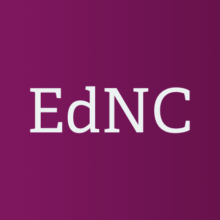The following is a press release from Public Impact.
Public Impact, which created and leads the national Opportunity Culture initiative, updates the Opportunity Culture dashboard annually and today released the latest results from 2018–19, showing that student learning continues to benefit, and teachers want to keep and grow Opportunity Culture.
The national Opportunity Culture initiative extends the reach of excellent teachers and their teams to more students, for more pay, within schools’ recurring budgets. Each school’s design and implementation team, which includes teachers, determines how to use Multi-Classroom Leadership and other roles to reach more of their students with high-standards, personalized instruction—one hallmark of great teachers.
Multi-classroom leaders (MCLs) lead a small teaching team, providing instructional guidance and frequent, on-the-job development, while continuing to teach part of the time. The schools redesign schedules to provide additional school-day time for teacher planning, coaching and collaboration. MCLs typically lead the introduction of more effective curricula, instructional methods, classroom management and schoolwide culture-building.
Accountable for the results of all students in the team, multi-classroom leaders earn substantially higher supplements averaging 20 percent (and up to 50 percent) of teacher pay, within the regular school budget. The school design teams reallocate school budgets to fund pay supplements permanently, in contrast to temporarily grant-funded programs.
Highlights from the dashboard include:
Schools—Opportunity Culture now has 302 schools committed. Opportunity Culture grew from seven schools implementing in 2013–14 to 151 schools in 2018–19. Seventy-three more schools have begun designing (planning for implementation) for 2019–20, and states and districts have committed to launch Opportunity Culture in an additional 78 schools in the next few years. Schools, cities, and states continue to join Opportunity Culture throughout each year.
Sites—Nine states now have a total of 28 Opportunity Culture sites covering a range of urban, suburban, and rural schools.
Students—More than 56,000 students were reached by one or more Opportunity Culture teachers. Nothing matters more for students than getting excellent teaching consistently: Excellent teachers help students learn more, and, as multi-classroom leaders, can help other teachers produce higher-growth student learning, too. Research also says that teachers producing high growth develop students’ higher-order thinking skills.
Teaching Roles—2018–19 saw 428 teachers in advanced roles and 1,393 teachers receiving on-the-job development on teacher-led teams. Advanced Opportunity Culture roles are reserved for teachers with a track record of high-growth student learning. Team teacher roles are held by teachers with a typical range of prior effectiveness. Before 2017–18, schools designing Opportunity Culture used a variety of roles to extend teachers’ reach. All schools designing Opportunity Culture implementation plans since 2018 use Multi-Classroom Leadership, embedding other roles within multi-classroom leaders’ small teams.
Teacher Satisfaction—In anonymous surveys, 97 percent of multi-classroom leaders (MCLs) and 87 percent of all those in Opportunity Culture roles said they want Opportunity Culture to continue in their schools. For MCLs, that’s a consistent survey response, while for all teachers and staff, it’s a substantial increase over prior years. Among educators in all Opportunity Culture roles, 94 percent agreed that teachers are held to high professional standards for delivering instruction. At least 90 percent of MCLs also reported a positive impact on staff collaboration and student achievement and agreed that they have new leadership opportunities, higher pay opportunities with Opportunity Culture, and the chance to reach more students. And 91 percent of MCLs and 88 percent of all Opportunity Culture teachers agree that they receive feedback that can help them improve teaching.
Pay—$4.7 million was reallocated to higher teacher pay in 2018–19; $14.7 million has been reallocated since Opportunity Culture began in 2013. The highest pay supplement was $23,000 (for MCLs). The average MCL supplement was $11,833, or 21 percent of the average teacher salary. (Calculated using state average salary in states implementing Opportunity Culture, weighted by the number of MCLs per state.) Opportunity Culture supplements for all teachers ranged from $1,000 to $23,000.
Student Results—A study from the American Institutes of Research and the Brookings Institution showed that students in classrooms of team teachers led by MCLs showed sizeable academic gains. The team teachers in the study were, on average, at the 50th percentile in the student learning gains they produced before joining a team led by an MCL. After joining the teams, they produced learning gains equivalent to those of teachers in the top quartile in math and nearly that in reading.
In early 2018, researchers at the Brookings Institution and American Institutes for Research released a study showing the effect Opportunity Culture multi-classroom leaders can have: Teachers who were on average at the 50th percentile in student learning gains, and who then joined teams led by multi-classroom leaders, produced learning gains equivalent to those of teachers from the 75th to 85th percentile in math and from the 66th to 72nd percentile in reading in six of seven statistical models. Nearly three-fourths of the schools in the AIR-Brookings study were Title I.
And in the 2017–18 school year, Opportunity Culture schools in North Carolina—the largest implementation state so far, with about 80 schools—outpaced the state results in student growth. While only 27 percent of non-Opportunity Culture schools in North Carolina exceeded student learning growth targets, nearly double that—53 percent—of Opportunity Culture schools exceeded growth.
Public Impact analyzes the dashboard results to continually improve Opportunity Culture materials and its work with schools and districts. Public Impact is eager to use these advanced teaching roles to meet or surpass its goal of:
- Reaching at least 75 percent of students…
- With at least 75th-percentile student learning growth*…
- While at least 75 percent of educators are satisfied or highly satisfied.
“As Opportunity Culture continues to grow, we at Public Impact learn so much from the educators across the country who continue to implement these roles, achieving more for their students and creating welcoming, supportive workplaces for teachers,” said Lucy Steiner, senior vice president for educator excellence and implementation services. “We so appreciate all their feedback and data that help us continually improve Opportunity Culture.”
*On average, compared to 2010 standard growth levels
About Public Impact
Public Impact’s mission is to improve education dramatically for all students, especially low-income students, students of color, and other students whose needs historically have not been well met. We are a team of professionals from many backgrounds, including former teachers. We are researchers, thought leaders, tool-builders, and on-the-ground consultants who work with leading education reformers.
Learn more about an Opportunity Culture on the OpportunityCulture.org website, which provides tools—all free—to build an Opportunity Culture, videos of teachers and principals, and related resources. Funding for development of resources to help schools design and implement Opportunity Culture models and support teachers taking on new roles has been provided by national foundations.
Hear directly from educators who have worked in Opportunity Culture schools in columns published on national and state news sites.
For more information, please visit www.OpportunityCulture.org. To arrange an interview with Public Impact, contact Sharon Kebschull Barrett at Sharon.Barrett@publicimpact.com; 919.590.4154.


